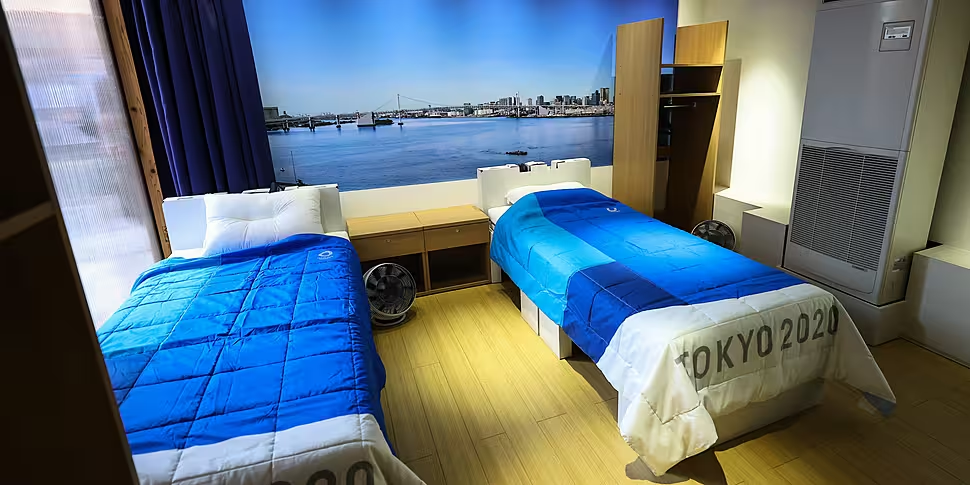Social media was awash with claims earlier this week over the beds that Olympic athletes will sleep in throughout the games in Tokyo.
The rumours were that the beds, which are made of cardboard, were designed to prevent competitors from getting intimate.
US runner Paul Chelimo shared photos of the beds online, alleging that the design is “aimed at avoiding intimacy among athletes”.
However, the rumours over the 'anti-sex' beds have since been debunked, with the materials used for their construction actually having nothing to do with preventing close encounters.
Architect Roisin Murphy explained to Sinead Ryan on The Home Show the concept behind why the Olympians must sleep on cardboard beds for the next few weeks.
"It's not about the jiggy-jiggy," she said.
"They are designed to take 400 pounds, and made by Shigeru Ban, a world-famous architect who has been designing structures in paper for 30 years.
"He makes these extraordinary buildings out of paper and out of cardboard."
Irish gymnast Rhys McClenaghan went viral this week after he shared a video on Twitter of himself jumping on the bed.
His experiment showed the bed, which can support around 200 kilograms, was well able to withstand any sudden movements.
The idea behind the use of cardboard in the Olympic village is instead all about sustainability, with the recyclable cardboard bed frames and mattresses made of polyethylene material destined to be reused to make plastic products once the games are over.
"In the age of environment, we're about to run out of the world's natural resources apparently so the use of materials is really important," Roisin explained.
"It is about that commitment to make the ordinary extraordinary, [Ban] has built incredible houses out of cardboard.
“Anti-sex” beds at the Olympics pic.twitter.com/2jnFm6mKcB
— Rhys Mcclenaghan (@McClenaghanRhys) July 18, 2021
Sinead was concerned that Olympic athletes have trained for years to get to the games, and now they have to sleep and recover on cardboard beds.
However, Roisin said the more important factor to consider is what kind of mattress is being used on the beds, rather than the base.
"Cardboard is just wood, so the only thing I would have a concern about with beds is the evolution of the box spring's disappearance in ordinary bedding," she said.
"There's a little bit of give in cardboard, it's soft, but if you think about your average hostel bed with the wooden planks on the base of it, they're very bad for your back.
"So you're improvising all the time with the mattress and I would be very interested to know what mattress they're using."









